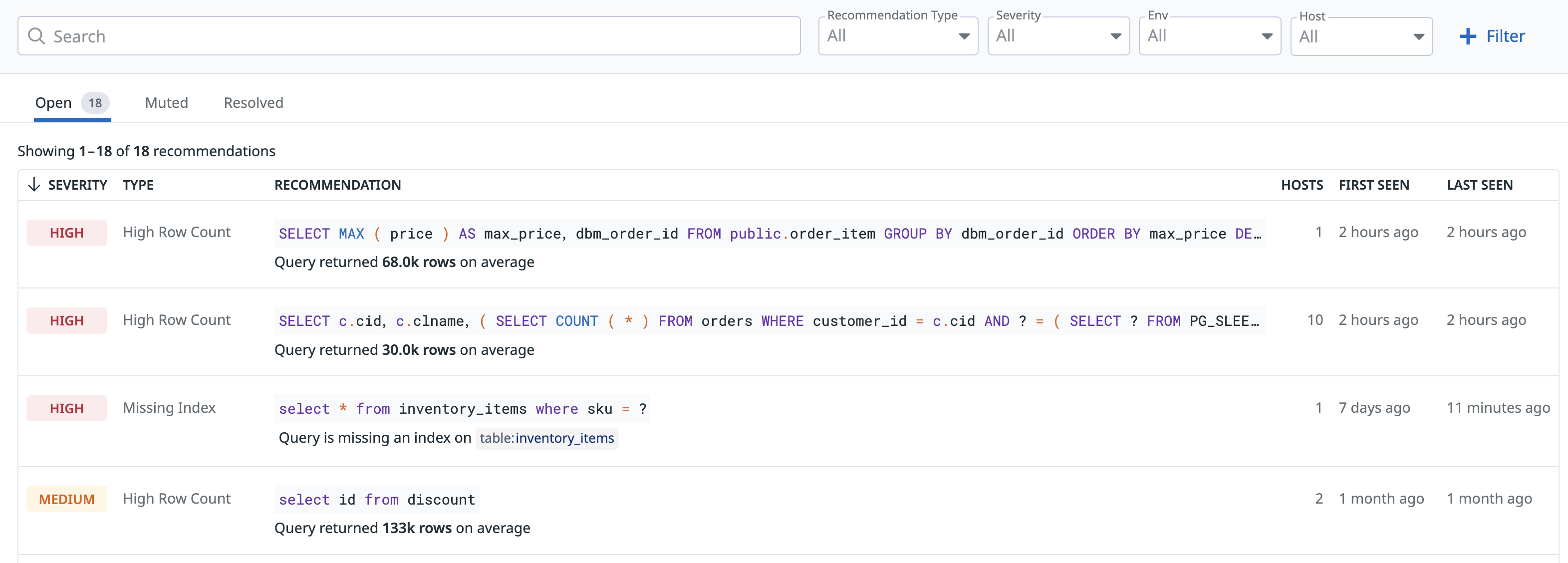- Essentials
- Getting Started
- Datadog
- Datadog Site
- DevSecOps
- Serverless for AWS Lambda
- Agent
- Integrations
- Containers
- Dashboards
- Monitors
- Logs
- APM Tracing
- Profiler
- Tags
- API
- Software Catalog
- Session Replay
- Synthetic Monitoring and Testing
- Incident Management
- Database Monitoring
- Cloud Security Management
- Cloud SIEM
- Application Security Management
- Workflow Automation
- Software Delivery
- Code Security
- Learning Center
- Support
- Glossary
- Standard Attributes
- Guides
- Agent
- Integrations
- Developers
- Authorization
- DogStatsD
- Custom Checks
- Integrations
- Create an Agent-based Integration
- Create an API Integration
- Create a Log Pipeline
- Integration Assets Reference
- Build a Marketplace Offering
- Create a Tile
- Create an Integration Dashboard
- Create a Monitor Template
- Create a Cloud SIEM Detection Rule
- OAuth for Integrations
- Install Agent Integration Developer Tool
- Service Checks
- IDE Plugins
- Community
- Guides
- OpenTelemetry
- Administrator's Guide
- API
- Datadog Mobile App
- CoScreen
- CoTerm
- Cloudcraft
- In The App
- Dashboards
- Notebooks
- DDSQL Editor
- Reference Tables
- Sheets
- Monitors and Alerting
- Metrics
- Watchdog
- Bits AI
- Software Catalog
- Error Tracking
- Change Tracking
- Service Management
- Actions & Remediations
- Infrastructure
- Resource Catalog
- Universal Service Monitoring
- Hosts
- Containers
- Processes
- Serverless
- Network Monitoring
- Cloud Cost
- Application Performance
- APM
- Continuous Profiler
- Database Monitoring
- Agent Integration Overhead
- Setup Architectures
- Setting Up Postgres
- Setting Up MySQL
- Setting Up SQL Server
- Setting Up Oracle
- Setting Up Amazon DocumentDB
- Setting Up MongoDB
- Connecting DBM and Traces
- Data Collected
- Exploring Database Hosts
- Exploring Query Metrics
- Exploring Query Samples
- Exploring Recommendations
- Troubleshooting
- Guides
- Data Streams Monitoring
- Data Jobs Monitoring
- Digital Experience
- Real User Monitoring
- Product Analytics
- Synthetic Testing and Monitoring
- Continuous Testing
- Software Delivery
- CI Visibility
- CD Visibility
- Test Optimization
- Quality Gates
- DORA Metrics
- Security
- Security Overview
- Cloud SIEM
- Cloud Security Management
- Application Security Management
- Sensitive Data Scanner
- Code Security
- AI Observability
- Log Management
- Observability Pipelines
- Log Management
- Administration
Recommendations
Database Monitoring (DBM) Recommendations draw attention to potential optimizations and problematic areas across your database fleet.
How it works
Datadog analyzes metrics and sample data from DBM to identify your systems’ highest-priority issues. A severity indicator is calculated for each recommendation, highlighting the most impactful areas to focus on. High-severity recommendations may indicate immediate or impending problems, while lower-severity recommendations can be addressed asynchronously to proactively maintain database health.
Supported recommendation types
| Recommendation Type | Description | MongoDB | MySQL | Oracle | PostgreSQL | SQL Server |
|---|---|---|---|---|---|---|
| Function in Filter | The query calls a function on columns being filtered, leading to expensive sequential scans that can’t take advantage of typical column-based indexes. | |||||
| High Impact Blocker | The query is causing a significant amount of waiting time for blocked queries. | |||||
| High Row Count | The query returns a large number of rows in its result set. | |||||
| Long Running Query | The query has durations that have exceeded a threshold of 30 seconds. | |||||
| Low Disk Space | The database instance is running low on disk space. Note: Only available on Amazon RDS. | |||||
| Missing Index | The query’s execution plan performs expensive sequential scans. When detected, Datadog recommends using an index to expedite the query. | |||||
| Unused Index | The index has not been used in any execution plans recently. |
Further reading
Additional helpful documentation, links, and articles:

